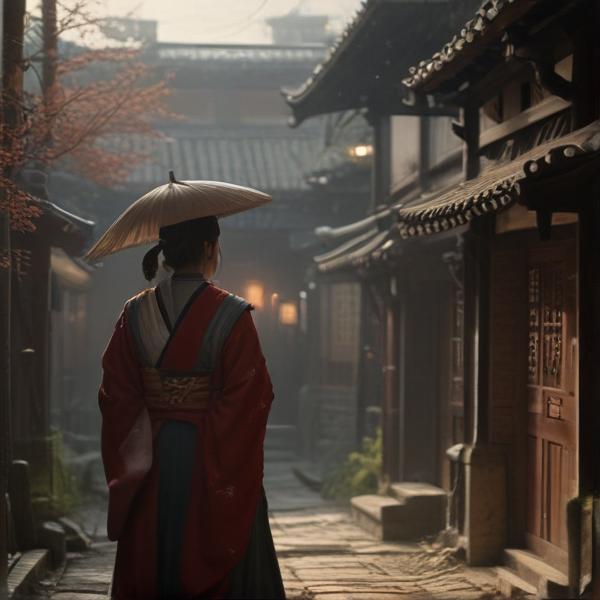基本信息 (Basic Information)
含义与用法 (Meanings & Usage)
中文核心释义 (Core Chinese Meaning): 跳舞,作舞;以身体动作表现艺术。
英文核心释义 (Core English Meaning): to dance; dance (as an art form); to move rhythmically with music.
象形意义 / 为何这么写 (Pictographic Meaning / Writing Rationale)
文言文释义 (Classical Chinese Meaning)
与现代意义相近,主要指舞蹈或舞动,也常用于诗歌、礼仪等语境中。Similar to modern meaning: primarily refers to dancing or moving in dance, often seen in poetry or ceremonial contexts.
深入学习 (In-depth Study)
字源故事 (Origin Story)
字形演变 (Character Evolution)
常用词语和例句 (Common Words & Examples)
舞蹈 (dance (as a performing art or movement))
她从小就喜欢舞蹈。
Eng: She has loved dancing since childhood.
舞台 (stage (for performances))
演员们在舞台上表演节目。
Eng: The actors performed on the stage.
跳舞 (to dance)
我们一起去跳舞吧!
Eng: Let's go dancing together!
相关成语 (Related Idioms)
载歌载舞
Meaning: to sing and dance (joyously celebrating together)
多语言翻译 (核心释义) (Translations (Core Meaning))
- French: danser; danse
- German: tanzen; Tanz
- Spanish: bailar; baile
- Italian: ballare; danza
- Portuguese: dançar; dança
- Russian: танцевать; танец
- Arabic: يرقص؛ رقص
- Persian: رقصیدن؛ رقص
- Dutch: dansen; dans
- Polish: tańczyć; taniec
- Vietnamese: nhảy múa; múa
- Ukrainian: танцювати; танець
视频学习资源 (Video Learning Resources)
通过以下链接在热门视频网站搜索 "舞" 的更多讲解:
Search for more explanations of "舞" on popular video sites:
- 在 Bilibili.com 搜索 "舞 字源 说文解字" (Search on Bilibili)
- 在 YouTube.com 搜索 "舞 character origin etymology" (Search on YouTube)
网络参考 (Web References for "舞") ()
网络内容摘要 (Web Content Summary):
-
核心含义:“舞”主要指跳舞、舞动身体,是表达情感或用于祭祀、娱乐的表演形式。 Core meaning: “舞” mainly means to dance, move the body rhythmically, often as a form of expression, ritual, or entertainment.
-
象形起源与文化背景:“舞”是会意兼象形字。甲骨文中表现为“人双手执牛尾”跳舞,金文中则有人头戴羽饰、手持羽物,体现古人祭祀时舞蹈的情景。常与祭祀、悼念亡灵等活动相关。例如,李白诗句“翩翩舞广袖”就用“舞”字形容衣袖随舞动作而飘动的美态。 Pictographic origin & cultural background: "舞" combines pictograph and ideograph. In oracle bone script, it depicts a person holding ox tails dancing; in bronze script, a person with feathered headgear is shown dancing, indicating ritual or ceremonial dance in ancient times. The character is often associated with rituals and honoring ancestors.
-
常用词与成语: 常见的词语有“舞蹈”(dance)、“舞台”(stage)、“舞会”(ball, dance party)。“翩翩起舞”(to dance lightly and gracefully)是常用成语。 Common phrases & idioms: Frequently used words include “舞蹈” (dance), “舞台” (stage), “舞会” (dance party). "翩翩起舞" means to dance beautifully and gracefully.
-
易混淆点:“舞”与“武”(military, martial)形近音近,但意义完全不同,需注意区分。 Possible confusion: “舞” and “武” look and sound similar but have different meanings; “舞” means dance while “武” refers to martial or military.
汉字"舞"的起源、演变过程-汉字字源辞典
汉字字源辞典收录7747条汉字词条,基本涵盖了常见汉字的字源解析,是汉字研究的必备工具。 ... ,这是古文写法的"舞"字,字形采用"羽、亡"会义,表示头戴羽饰,祭祀舞蹈,悼念亡灵。 ...
细说汉字:舞 - 漢文化 - 通識 - 漢典
细说汉字:舞 - 漢文化 - 通識. 李白《高句骊》诗:" 翩翩舞广袖 "这个"舞"字就是个象形字。 我们看甲骨文 ① 的中间是正面立着的一个人,左右两手执牛尾而舞,正如后世头插雉翎翩翩起舞的意思。 金文 ② 发生了较大的变化,除了基本上保留甲骨文的形象之外,又在其左下加上了"彳 ...
更多图片 (舞 More Images) ()
